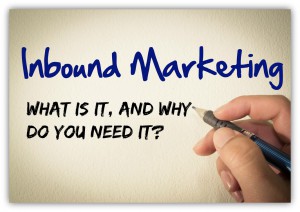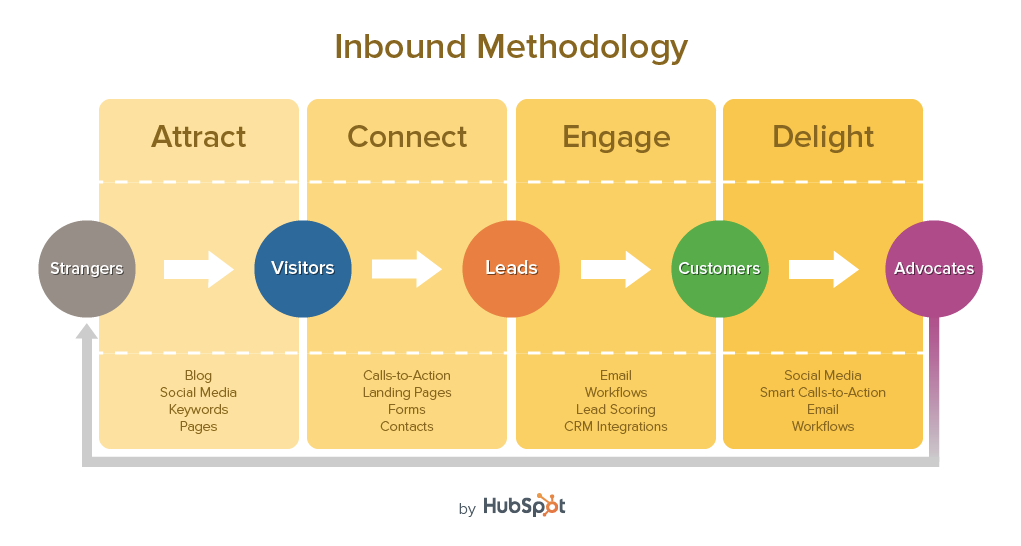What is Inbound and Why Do You Need It?
 Inbound or content marketing is nothing new. As marketers, we’ve been creating content — e-books, white papers, webinars, infographics, blogs — for years. What’s new is using inbound to build business. Here’s how: We create content that potential buyers want and need, optimize the website, build trust with the prospect through personalized lead nurturing, and eventually turn that prospect into a customer.
Inbound or content marketing is nothing new. As marketers, we’ve been creating content — e-books, white papers, webinars, infographics, blogs — for years. What’s new is using inbound to build business. Here’s how: We create content that potential buyers want and need, optimize the website, build trust with the prospect through personalized lead nurturing, and eventually turn that prospect into a customer.
And we do all of this in real time, while we track what’s working and what isn’t, enabling us to show the ROI of marketing. Statistics tell us inbound methods cost 62% less than outbound methods, and generate three times more leads. Those are some pretty awesome numbers.
Just the basics.
In the past, customers were pretty uninformed on products. Their sources of information were usually a salesperson, TV or radio ads, and maybe a billboard or some print ads. Marketers usually relied on interruptive forms of advertising like direct mailers and cold calls to fill up their sales funnel, with almost no way of knowing whether the customer was even a decent lead. The more people marketers targeted, the better their chance of convincing someone to buy.
Skip ahead to today — consumers are highly educated on a product or service before they even think about calling a salesperson. They’ve done their Google research, and everyone from their mom to the kid they sat next to in high school math class is willing to give them a recommendation. They can tune out TV commercials by getting on their phones. Obviously TV, radio and print still play very important roles in advertising — it’s just becoming harder for these messages to be seen and heard in this high-tech age of mobile communications.
Enter inbound marketing. With inbound, you aren’t interruptive — you’re there when consumers are looking for you. You offer them something they find value in — and are willing to exchange information for — and then you nurture them using personalized and valuable content until they’re ready to purchase. We all know coming up on the first page of a Google search is highly important. Knowing how your customers are looking for you is equally important.
Why “being there” works.
They say asking for forgiveness is easier than asking for permission. Not so much in marketing; not in today’s world. Luckily, inbound marketing is permission-based marketing. You know your customers — their demographics, their pain points and the information they need to feel comfortable making a purchase. So you write e-books, devise checklists, gather stats or set up webinars. You create content because you know they will use it and it empowers them to start building trust with you. You optimize your blog and web pages so that they pop up when your customers are conducting their searches. These blogs show your customers that, one, you know them and how they look for information (the words they use, the info that will help them, etc.) and, two, you have the knowledge and experience to help them (show off what you have done to help others like them).
Know the different stages of the buyer’s journey. A guy just starting his research isn’t going to sit through an hour-long demo if he doesn’t even know whether your product is a good solution for him. Offer content your customers want, when and how they want it. Inbound tools allow you to personalize and automate your nurturing campaigns. You can set up workflows that respond to interactions customers have with your website, emails and social media, allowing you to monitor them and send only content they’ll find valuable. Again, this builds trust, and it’s helpful, rather than annoying or interruptive.
How does this inbound thing lead to new customers?
So how do you do inbound? Four steps:
- Entice strangers to your website and landing pages with your blog. Write to your prospects on topics they’re searching for — offer them help, rather than telling them how great your company is. Next, each page of your website should focus on a long-tailed keyword, something your prospects are searching for. Paid digital media is another great way to make sure you grab your potential leads’ attention and drive them to your landing pages. Finally, your organization’s social media team should be tweeting and posting links to your content.
- Now that you have these visitors on your site, give them a chance to become a lead. Set up landing pages that contain an offer, and ask them to fill out a form. Ask for information that is a fair exchange for your offer — you should at least get their name and email address, enabling you to follow up with similar offers.
- Now that you’ve converted these visitors into leads, you can start nurturing them. Setting up automated workflows allows you to have a consistent follow-up and personalize their journey. Did they download your e-book on topic X but not topic Y? Send them something else about X, and see if they download that too. Then follow up with some blog posts about it. Eventually you see they’ve reached your demo page, or contact page, but haven’t followed through. Could be time for a call from sales. But now you know what they’re interested in, and sales can refer to that: “Hey, I notice you’ve checked out our information on topic X. Are you having a problem with something specific?” Beats a cold call: “Hey, we do all this great stuff. Would you like to work with us?”
- Just because you closed your prospect as a customer doesn’t mean the helpful information should stop flowing! Keep helping them with additional information and tools that will make their lives easier. They’ll be happy, they’ll love you and they’ll send all their friends your way!
For all of us who are more visual learners – Hubspot lays this inbound methodology out perfectly.
In short, be there when your customers begin looking for you, and capture their attention. Then nurture those leads, build trust, close them as customers, and keep them happy and referring.

Sign up to receive our industry trends newsletter:

